Emory
Report homepage

December 12 , 2005
Faces of hope
Lisa Rotondo is assistant director for The Carter Center’s trachoma control program.
I took this collection of photos during a trip to Sudan in August.
The Carter Center supports Sudan’s blindness prevention programs; as part of that support, I participated in the Sudanese Ministry of Health’s situational analysis of the trachoma control program.
Trachoma control programs follow the World Health Organization-endorsed “SAFE” strategy: surgery, antibiotic, facial cleanliness, and environmental improvement.
A routine element of my job is to visit communities in which we work to talk to the people carrying out interventions, offer support and discuss the impact on community members.
During the August trip we visited trachoma-endemic communities in the north of Sudan and internally displaced persons camps around Khartoum to review program activities and hear from the participants.
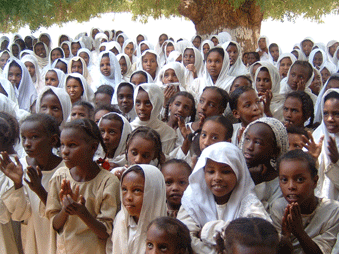
I met these girls during a visit to their all-girl primary school in Imani. They were on their way home but, after noticing our group of visitors, they gathered curiously in the courtyard. They started calling, wanting to know why we were there. After a few seconds of figuring out what to say, I simply reminded them how lucky they are to be able to attend school and congratulated them on keeping their faces so clean and beautiful. I encouraged them to stay in school; perhaps, I said, one of them would become head of state someday. They giggled and began applauding.

After talking to the girls, we visited several classrooms and talked to their teachers. We familiarized ourselves with the national curriculum
on hygiene
and health
education.
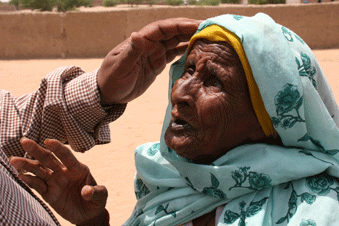
We encountered this elderly woman in a community called Imani in Northern State. Kamal Hashim, Sudan’s national coordinator for blindness prevention programs, listened as the woman described with emotion her eye pain and vision problems. Those suffering with trichiasis, the potentially blinding advanced stage of trachoma, can receive eyelid surgery that will ease pain and prevent further vision loss.
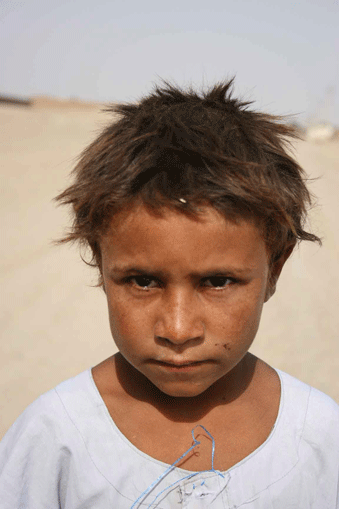
I met this young boy during a refueling stop en route to Imani. He and his mother approached me as they were walking to market. I did my best to communicate through gestures, and he posed for his picture.
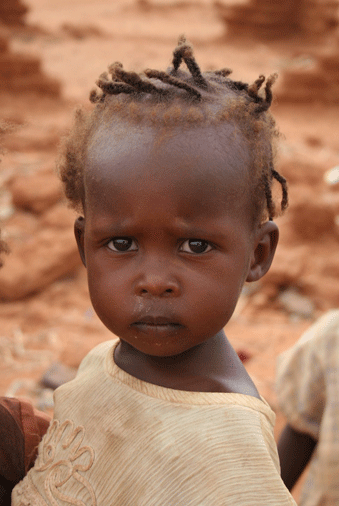
I saw this girl during a visit to Al Salaam, a camp of about 25,000 internally displaced persons located near Khartoum. One important activity in preventing trachoma is to promote hygiene education—in particular, facial cleanliness. The girl’s dirty, yet beautiful face was evidence of the camp’s lack of clean water. Environmental improvements, such as provision of clean water and promotion of household latrines, are crucial in the continued control of trachoma.
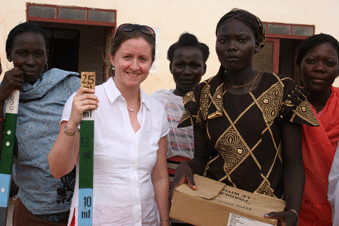
In Sudan, The Carter Center supports mass distribution of Pfizer-donated azithromycin in communities endemic with trachoma. These women at
Al Salaam camp distributed the drug door-to-door, carrying their height-based dosing sticks; children are measured by height to determine the proper dose of medication.
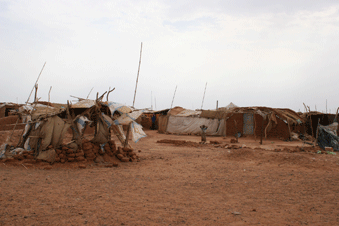
This image of Al Salaam camp shows the typical living situation of Sudanese who were displaced from their homes by the 21-year civil war or by other conflicts such as that in Darfur. Located north of Khartoum, Al Salaam (“peace” in Arabic) camp houses approximately 120,000 people. The Carter Center supports health education and drug distribution in these camps, but the lack of water and sanitation prove to be constant challenges.
TOP
|